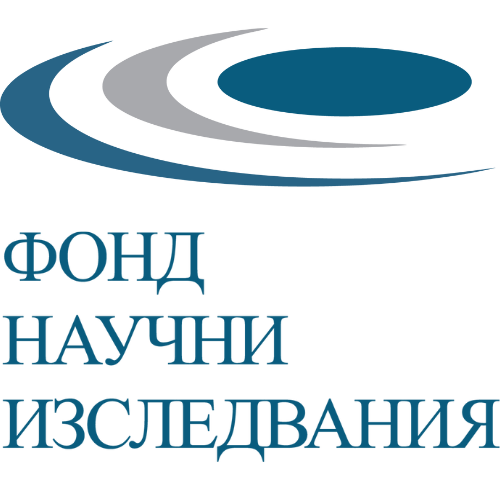SYSTEM FOR CONTROL, EVALUATION AND VISUALIZATION OF THE PHYSICAL DEVELOPMENT OF YOUNG MALE TAEKWONDO ATHLETES
DOI:
https://doi.org/10.15547/tjs.2024.s.01.025Keywords:
taekwondo, control, test, physical developmentAbstract
PURPOSE: The purpose of this study is to create a normative tables for control and evaluation of the physical development in taekwondo according to the age groups of the World Taekwondo Federation. METHODS: Seven standard physical tests were used to measure the physical development of 208 male taekwondo athletes. The tests we used were: 1. Stand and reach, 2. Split, 3. Modified T- test, 4. Vertical jump, 5. Push-ups – 30 seconds, 6. Sit-ups – 30 seconds, 7. Squat jumps – 30 seconds. The method of Sigma digressions was used for creating the ranking scales. RESULTS: On the basis of our results specific tables were designed for each test and age group with the use of a 7, 20 and 50-grade (point) scale. The input and visualization were automated into a graphic file for easier comprehension. CONCLUSIONS: The results of our study are a starting point for creating a database for taekwondo. They can also serve as a basis for overall evaluation system of taekwondo athletes. Such a system will provide a crucial feedback about the efficiency of the training methods, the current physical condition of the athletes and will be of motivational use for taekwondo practitioners.
References
Borukova, M. Sistema za control na fizicheskoto razvitie I spetsifichnata rabotosposobnost na podrastvashti basketbolisti [System for control of the physical development and specific fitness in adolescent basketball athletes]. Sofia, NSA Press, 2023. ISBN 978-954-718-717-7, 2022. [In Bulgarian
Dasheva, D. Bankov, P. Nikolova, E. Iliev, D. Detsko-iunosheski sport – konvergentsiya I nova viziya [child – adolescent sport – convergence and a new vision] Sport i Nauka, 1313 – 9126, 2, 2015. [In Bulgarian].
Bridge, Craig, Santos, J., Chaabene, H., Pieter, W., Franchini, E. Physical and Physiological Profiles of Taekwondo Athletes. Sports medicine (Auckland, N.Z.). 44. 10.1007/s40279-014-0159-9, 2014.
Fukuda, D. Assessments for Sport and Athletic Performance; 2019. Human Kinetics, Champaign, ISBN: 978-1-4925-5988-7, Human Kinetics. New York, 2019.
Nam, S.S., Lim, K. Effects of Taekwondo training on physical fitness factors in Korean elementary students: A systematic review and meta-analysis. J Exerc Nutrition Biochem. Mar 31;23(1):36-47. doi: 10.20463/jenb.2019.0006, 2019.
Cetin, C., Kececi, A., Erdogan, A. Influence of custom- made mouth guards on strength, speed and anaerobic perfor¬mance of taekwondo athletes. Dent Traumatol. 25:272-6, 2009.
Markovic G., Misigoj-Durakovic, M., Trninic, S. Fitness profile of elite Croatian female taekwondo athletes. Coll Antropol. ;29:93-9, 2005.
Heller J, Peric T, Dlouha R. Physiological profiles of male and female taekwon-do (ITF) black belts. J Sport Sci.16:243-9, 1998.
Toskovic NN, Blessing D, Williford HN. Physiologic profile of recreational male and female novice and experienced Tae Kwon Do practitioners. J Sports Med Phys Fit.; 44:164-72, 2004.
Erie, Z., Pieter, W. Physical fitness in recreational child taekw¬ondo participants. In: Hume P, Stewart A. editor, Kinanthrop- ometry XI: 2008 Pre-Olympic congress anthropometry research. Auckland, New Zealand: Auckland University of Technology; p. 90-95, 2008.
Noorul H, Pieter W, Erie Z. Physical fitness of recreational adolescent taekwondo athletes. Braz J Biomotricity, 2: 230-40, 2008.
Suzana M, Pieter W. Motor ability profile of junior and senior taekwondo club athletes. Brazilian J Biomotricity,3: 325-33, 2009.
Chiodo S., Tessitore, A., Lupo, C. Effects of official youth taekwondo competitions on jump and strength performance. Eur J Sport Sci.,12:113-20, 2012.
Ball N, Nolan E, Wheeler K. Anthropometrical, physiological, and tracked power profiles of elite taekwondo athletes 9 weeks before the Olympic competition phase. J Strength Cond Res., 25:2752-63, 2011.
Casolino, E., Cortis, C., Lupo C. Physiological versus psy¬chological evaluation in taekwondo elite athletes. Int J Sports Physiol Perform., 7:322-31, 2012.
Thompson WR, Vinueza C. Physiologic profile of Tae Kwon Do black belts. Sports Med Train Rehabil., 3:49-53, 1991.
Rivera M, Rivera-Brown A, Frontera W. (1998). Health related physical fitness characteristics of elite Puerto Rican athletes. J Strength Cond Res., 12:199-203, 1998.
Taaffe D, Pieter W. Physical and physiological characteristics of elite taekwondo athletes, vol. 3. In: Commonwealth and Inter¬national Proceedings. Auckland, New Zealand; p. 80-8, 1990.
Chiodo, S., Tessitore, A., Cortis, C. Effects of official Tae¬kwondo competitions on all-out performances of elite athletes. J Strength Cond Res. 25:334-9, 2011.
Cubrilo D., Djordjevic, D., Zivkovic, V. Oxidative stress and nitrite dynamics under maximal load in elite athletes: relation to sport type. Mol Cell Biochem., 355:273-9, 2011.
Lee, Y.W., Shin, K.W., Paik, I.Y. Immunological impact of Taekwondo competitions. Int J Sports Med., 33:58-66, 2012.
Bouhlel E, Jouini A, Gmada N. (2006). Heart rate and blood lactate responses during taekwondo training and competition. Sci Sports., 21:285-90, 2006.
Butios S., Tasika N. Changes in heart rate and blood lactate concentration as intensity parameters during simulated Taekw¬ondo competition. J Sports Med Phys Fitness, 47:179-85, 2007.
Perez-Gomez J, Alcaraz P, Diaz Cuenca A. Fitness and body composition in national junior taekwondokas. First International Congress on Sport Sciences UCAM. Professional Challenges in the European. Higher Educ., 5:35, 2008.
Perandini L, Siqueira-Pereira T, Okuno N. Relationship between vagal withdrawal and reactivation indices and aerobic capacity in taekwondo athletes. Rev Bras Cineantropom Dese- mpenho Hum., 12:8-13, 2010.
Taaffe D, Pieter W, Yeh K. Short-term muscle power of junior taekwondo athletes. In: International Congress and Exposition on Sports Medicine and Human Performance, Vancouver; 16-20, 1991.
Bercades L, Pieter W, Lochner L. Short-term muscle endurance in young taekwondo athletes. In: Varnes J, Gamble D, Horodyski MB, editor. 1995 ICHPER.SD 38th World Con¬gress Proceedings. Gainesville: The University of Florida Col¬lege of Health and Human Performance, 167-169, 1995.
Lin W., Yen, K., Doris, C. Anaerobic capacity of elite Tai¬wanese Taekwondo athletes. Sci Sports, 21:291-3, 2006.
World Taekwondo, (2024), Rules and regulations, available at https://www.worldtaekwondo.org/viewer_pdf/external/pdfjs-2.1.266-dist/web/viewer.html?file=https://www.worldtaekwondo.org/att_file/documents/WT%20Competition%20Rules%20and%20Interpretation%20(June%2014,%202024,%20GA%20E%20Vote).pdf (accessed 26.07.2024)
Sergiev, G. Improvement of the system for the assessment of flexibility of 10-12-year old male artistic gymnasts. Journal of applied sport sceince, 26-38. doi:DOI: 10.37393/jass.2019.01.3, 2019.

Downloads
Published
Issue
Section
License
Copyright (c) 2025 Trakia University

This work is licensed under a Creative Commons Attribution-NonCommercial 4.0 International License.


